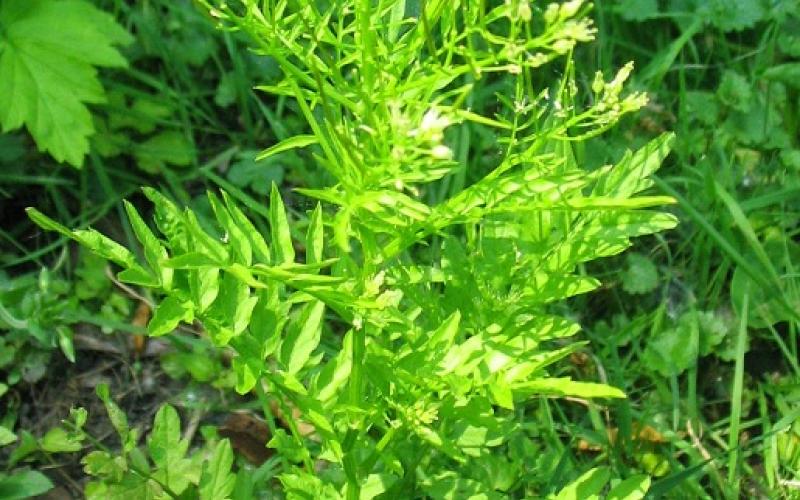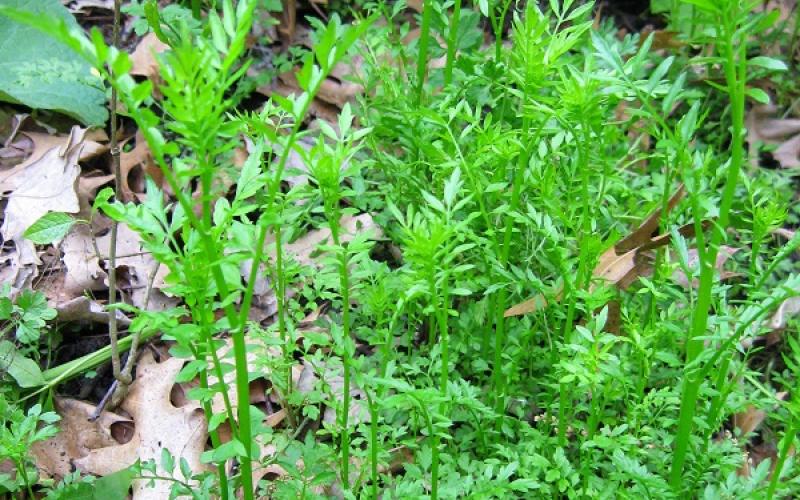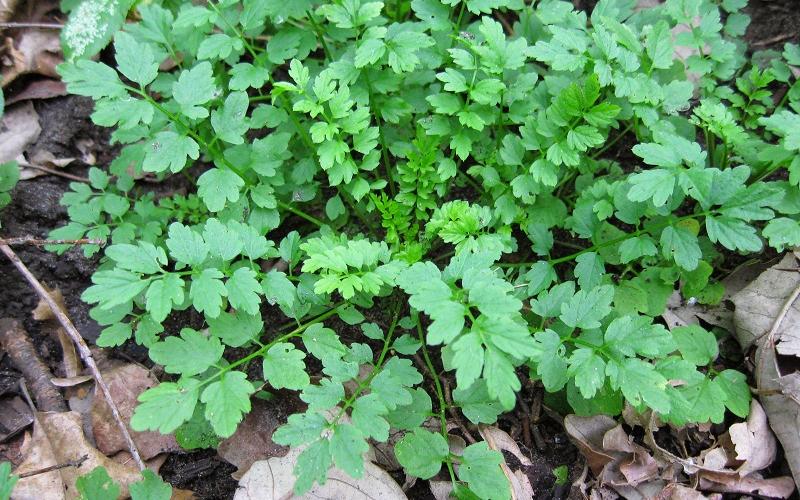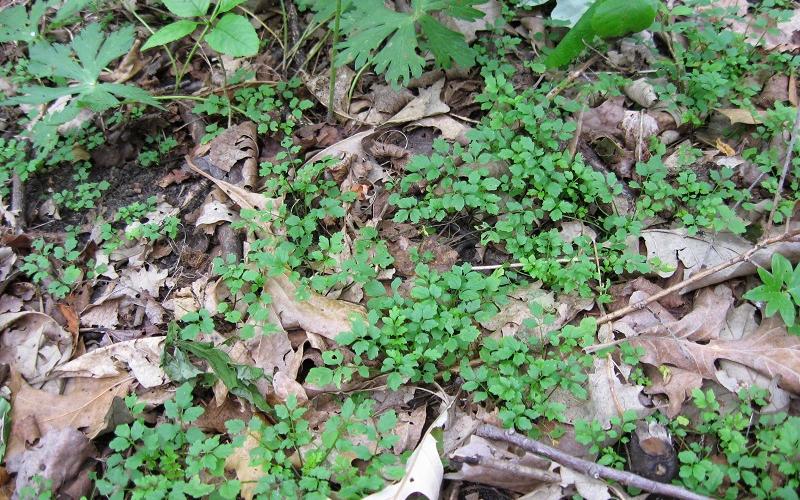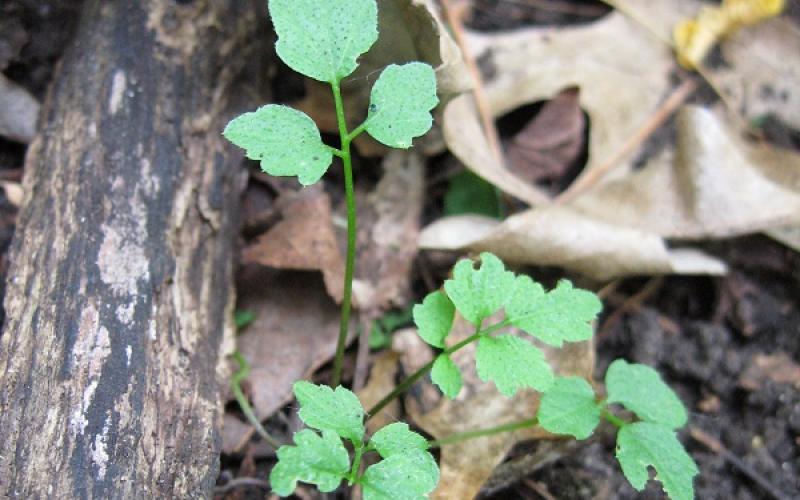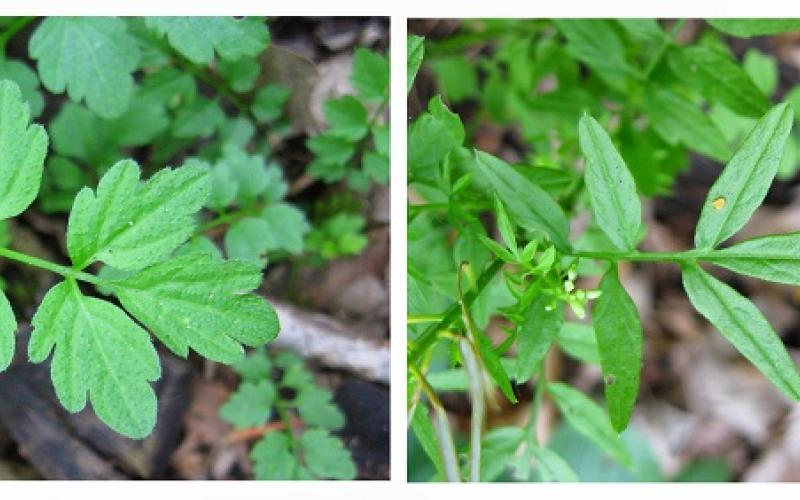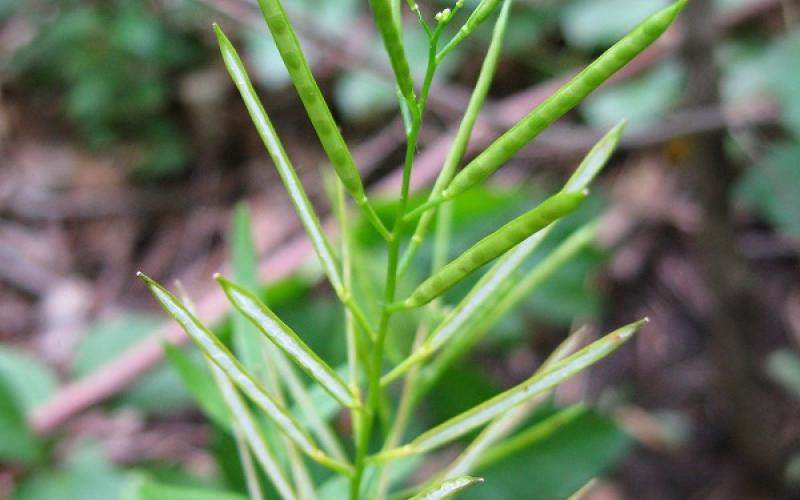Common Names: Narrowleaf Bittercress, Narrow-leaved Bittercress, Bushy rock-cress
Scientific name: Cardamine impatiens L.
Related species: C. pectinata Pall. Ex DC. (sometimes listed as a subspecies of C. impatiens)
Legal Status
Efforts must be made to prevent seed maturation and dispersal of plants into new areas. Additionally, no transportation, propagation, or sale of these plants is allowed. Failure to comply may result in enforcement action by the county or local municipality.
Background
Rapidly invading forested areas along rivers in eastern Minnesota, narrowleaf bittercress is raising concerns about its invasive potential. It is not known how narrowleaf bittercress was introduced to North America from Eurasia. It was first reported in the US in New England in 1916. The first report in Minnesota was in 2008. By 2009, multiple discrete infestations were reported in several counties.
Description
- Narrowleaf bittercress is an annual or biennial forb that has a height of 6- 31 inches.
- First year plants form a rosette and rarely flower. More commonly, the basal leaves of the rosette die over winter and the plant bolts and flowers the second year on an erect stem.
- The rosettes have 3- 11 leaflets with rounded lobes. In contrast, bolted plants have 6- 20 sharply toothed leaflets.
- Multiple small flowers with 4 white petals produce slender seedpods (siliques) from May to September. Narrowleaf bittercress reproduces exclusively by seed and a single plant can produce up to 5,500 seeds.
Habitat
Commonly, narrowleaf bittercress is found in forested floodplains and along rivers and streams in both its native and naturalized ranges. Occasionally, isolated populations occur in dry, sunny areas away from water.
Means of spread and distribution
Narrowleaf bittercress can self-pollinate and produces prolific quantities of seed in siliques that can shoot the seed a short distance from the plant when the dried seedpods burst open. Thus, a single plant can quickly form a colony. Seeds can germinate in water and rivers and streams are considered a method of long-range dispersal. Seeds can also be moved by human, animals, and vehicles.
Narrowleaf bittercress is reported in the northeastern United States and New Brunswick and Ontario in Canada. In Minnesota, observant botanists, natural resource specialists, and vegetation management consultants reported narrowleaf bittercress spreading at alarming rates in Hennepin, Ramsey, Washington, and Winona counties. Most infestations are located adjacent to either the St. Croix or Mississippi River.
Impact
Narrowleaf bittercress outcompetes desirable vegetation which may result in decreased species diversity and habitat quality. The full impact of narrowleaf bittercress remains unknown due to the newness of most infestations in North America. Narrowleaf bittercress proliferates and spreads very quickly, provoking apprehension that it may prove highly invasive. The experience of other states with this species provides a basis for concern. Narrowleaf bittercress is established in New England. It was recently assessed and ranked as highly invasive plant in New York and a noxious weed in Connecticut and Massachusetts.
Prevention and management
- Persons working in areas with narrowleaf bittercress should carefully clean all boots, clothing, and equipment to ensure that they do not transport seed to uninfested locations. Monitor waterways carefully for this species.
- For all management options, infestation sites will need to be monitored and treated repeatedly until the seedbanks are depleted.
- Small infestations can be hand-pulled easily. The site should be monitored and narrowleaf bittercress plants removed in the spring, summer, and fall to prevent seed production. Plants with flowers and/or seedheads should be bagged and disposed. Hand-pulling large infestations may result in soil disturbance that favors the germination of more narrowleaf bittercress.
- There is little information available for chemical control of narrowleaf bittercress. Following guidelines for controlling other biennial mustards such as garlic mustard, Alliaria petiolata, may be helpful. For specific herbicide recommendations, check with your local University of Minnesota Extension agent, co-op, or certified landscape care expert. There are several businesses throughout the state with certified herbicide applicators that can be hired to perform chemical applications. Narrowleaf bittercress is also found in or around riparian and wetland habitats. If treating plants near water with an herbicide, please be aware of the state pesticide laws and use only products labeled for aquatic use.
- Studies of narrowleaf bittercress in its native range indicate that plant competition may reduce colonies to a few plants. Improving the overall vegetation quality and diversity may reduce the dominance of narrowleaf bittercress.
- Narrowleaf bittercress lifecycle and treatment timing graphic
